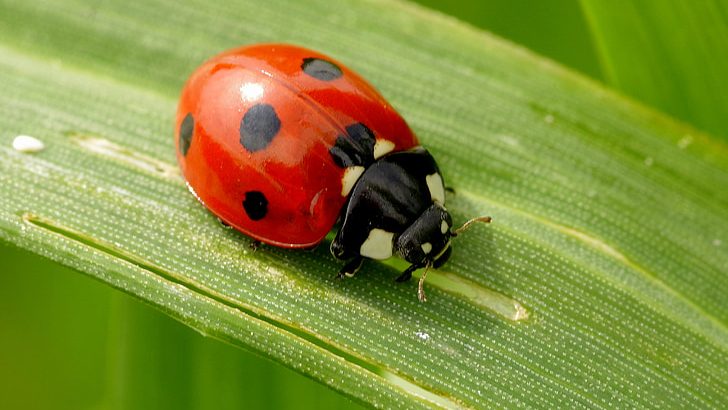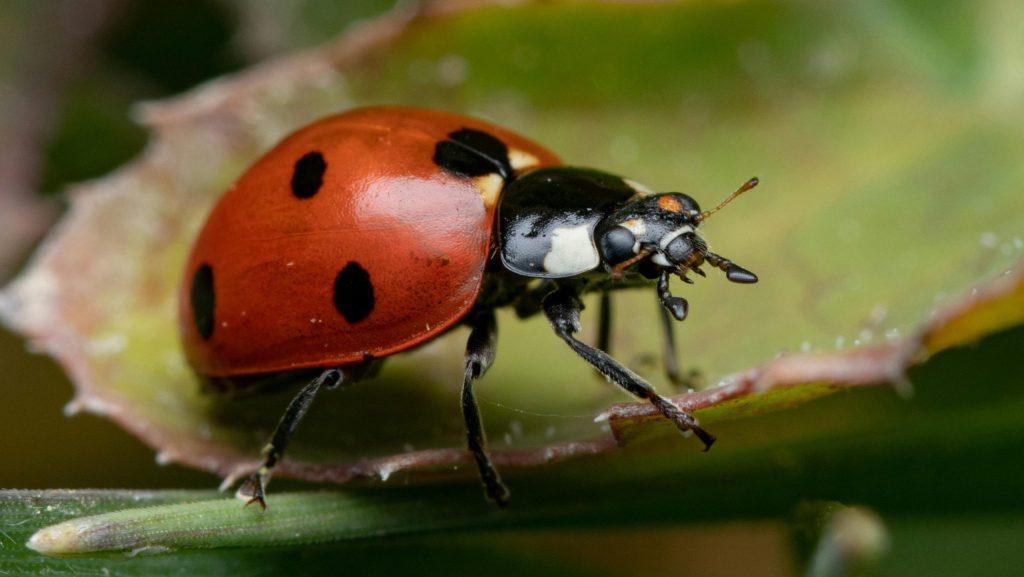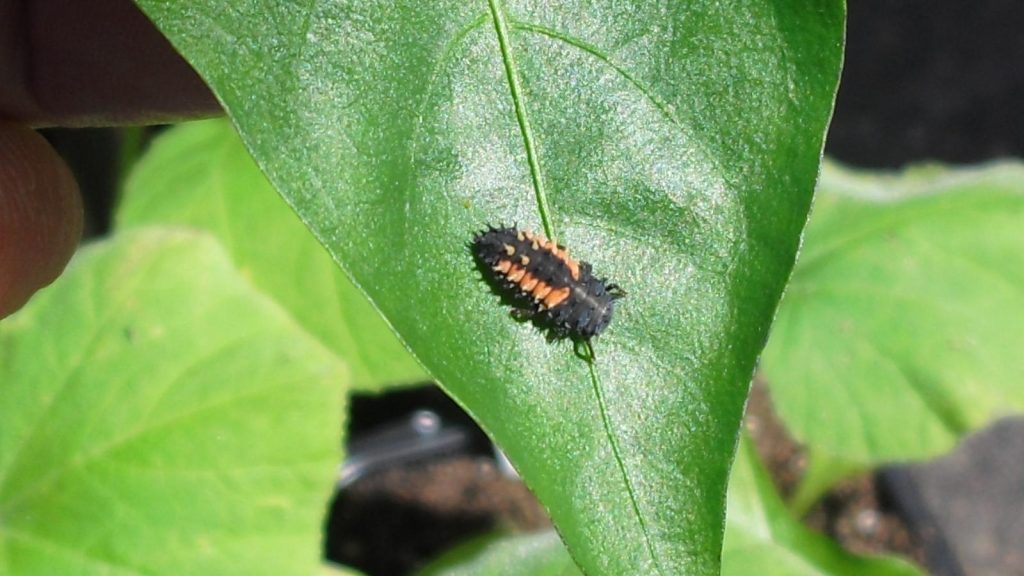Key Takeaways
-
Ladybug Toxicity: Some species release mild toxins as a defense, which may cause skin irritation or allergic reactions.
-
Identifying Poisonous Ladybugs: Toxic species often have bright colors like black, white, or green and may emit a foul-smelling fluid when threatened.
-
Effects on Humans: Toxins can cause minor symptoms such as itching, redness, or swelling, but are not dangerous to life.
-
Effects on Pets: Pets ingesting toxic ladybugs may experience vomiting, diarrhea, or other gastrointestinal issues.
-
Handling Infestations: Prevent entry by sealing cracks, using natural repellents, and removing ladybugs with a vacuum.
-
Common Misconceptions: Most ladybugs are harmless—bright colors or large size alone don’t always signal toxicity.

What Makes Ladybugs Poisonous?
Ladybugs are not inherently dangerous, but some species have evolved to produce toxins as a method to defend themselves. When threatened, they can release a chemical known as hemolymph from their joints, which can irritate the skin and cause allergic reactions. These toxins are not usually lethal but can cause discomfort for humans and pets if they come in contact with them. Also Read: How to get rid of ladybugs naturally.What Ladybug is Poisonous?
There are certain species of ladybugs, especially those with vibrant colors, that produce toxic secretions. The bright colors of these ladybugs serve as a warning to predators that they are not a safe food source. For instance, the poisonous black and white ladybug and the poisonous green ladybug release this toxic substance to protect themselves from being eaten.Quick Comparison Table: Poisonous vs. Non-Poisonous Ladybugs
| Characteristic | Poisonous Ladybug | Non-Poisonous Ladybug |
|---|---|---|
| Color | Typically black, orange, or yellow with black spots; may also have stripes (e.g., poisonous black and white ladybug). | Usually bright red or orange with black spots or solid color. |
| Toxin Release | Can secrete a yellow, bitter fluid that may cause skin irritation or mild allergic reactions. | Harmless and does not secrete any toxic fluid. |
| Behavior | Often more aggressive and may bite when disturbed. | Generally gentle and unlikely to bite humans. |
How to Tell If a Ladybug Is Poisonous
Identifying a poisonous ladybug can be tricky, as many harmless species also sport bright colors. However, there are some key signs you can look for:How to Identify Poisonous Ladybugs
-
 Color: While most ladybugs are red with black spots, some toxic species, such as the poisonous green ladybug or the black poisonous ladybug, may appear in different shades, including yellow, orange, or black with white spots.
Color: While most ladybugs are red with black spots, some toxic species, such as the poisonous green ladybug or the black poisonous ladybug, may appear in different shades, including yellow, orange, or black with white spots. -
 Size and Shape: The poisonous killer ladybug tends to be larger than common ladybugs. While size alone isn’t a definitive indicator, larger species can sometimes produce more toxins.
Size and Shape: The poisonous killer ladybug tends to be larger than common ladybugs. While size alone isn’t a definitive indicator, larger species can sometimes produce more toxins. -
 Behavior: Ladybugs that feel threatened will often release their toxins. If you see a ladybug “playing dead” or emitting a strong smell when touched, it may be trying to warn you of its toxicity.
Behavior: Ladybugs that feel threatened will often release their toxins. If you see a ladybug “playing dead” or emitting a strong smell when touched, it may be trying to warn you of its toxicity.
How do you know if a ladybug is poisonous?
The best way to avoid exposure is to look for any unusual reactions after handling a ladybug. If you experience mild irritation or an allergic reaction, it’s a sign that the ladybug may have been toxic. In such cases, it’s best to contact professional pest control to help manage any infestations and avoid repeated exposure.

Not getting a solution?
Get your free pest control estimate today!Are Ladybugs Poisonous to Humans?
For the most part, ladybugs are not poisonous to humans, but some species can cause mild to moderate reactions. While the bright colors and patterns on ladybugs, such as the poisonous black and white ladybug, act as a warning, they are typically harmless unless crushed or threatened. When handled, these ladybugs release a yellowish fluid that might cause skin irritation, especially in sensitive individuals. Symptoms in Humans:- Itchy or red skin
- Swelling around the affected area
- Mild burning or stinging sensations
Are Ladybugs Poisonous to Pets?
Ladybugs can be harmful to pets, especially dogs and cats, if ingested. Some species, like the poisonous killer ladybug and the poisonous green ladybug, can cause gastrointestinal upset in animals. If your pet eats a ladybug, you may notice the following symptoms: Symptoms in Pets:- Vomiting
- Drooling
- Lethargy
- Diarrhea

How to Handle a Ladybug Infestation
While ladybugs are generally harmless, a large infestation inside your home can be a nuisance. Fortunately, there are a few things you can do to prevent them from becoming a problem.Steps to Prevent Ladybug Infestations
-
Seal cracks and gaps around doors, windows, and walls where ladybugs may enter.
-
Use natural repellents like citrus peel or essential oils to deter ladybugs from entering your home.
-
Vacuum up ladybugs to safely remove them from your home. Dispose of them outside to prevent them from returning.
Myth vs. Fact: Are Ladybugs Poisonous?
There are many misconceptions about ladybugs and their poisonous nature. Let’s clear up some of the most common myths:| Myth | Fact |
|---|---|
| All ladybugs are poisonous. | Only certain species, like the poisonous black and white ladybug, produce toxins; most are harmless. |
| Ladybugs can kill humans or pets. | Ladybug toxins cause mild irritation but are not lethal to humans or animals. |
| Larger ladybugs are more poisonous. | Size is not an indicator of toxicity; even small ladybugs can release toxins. |
| All brightly colored ladybugs are dangerous. | While bright colors can indicate toxicity, not all colorful ladybugs are harmful. |
| Ladybug larvae are toxic. | Ladybug larvae are harmless and highly beneficial as they feed on garden pests. |





